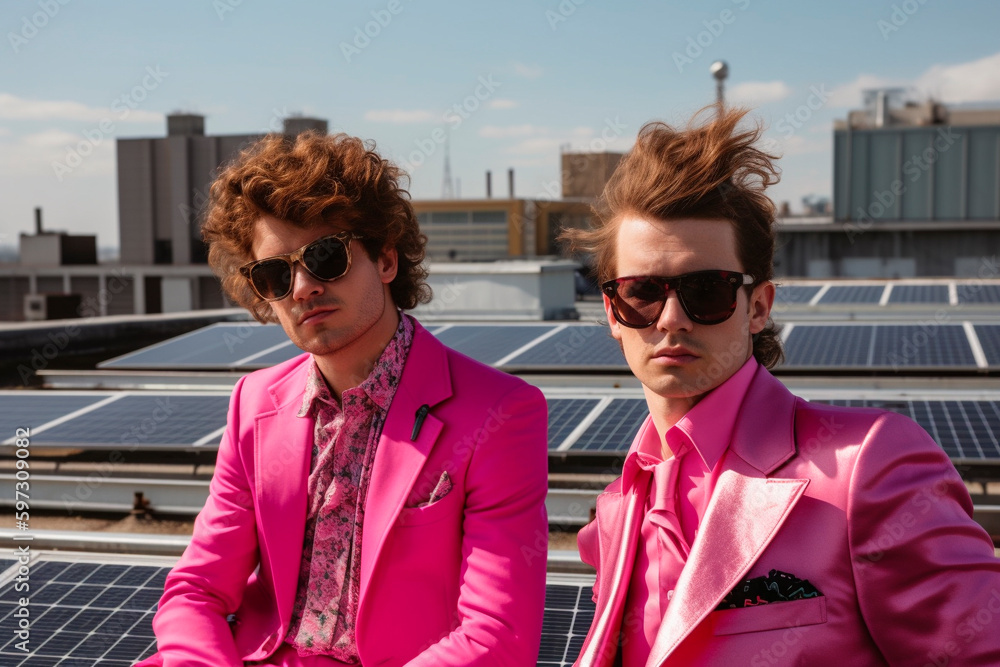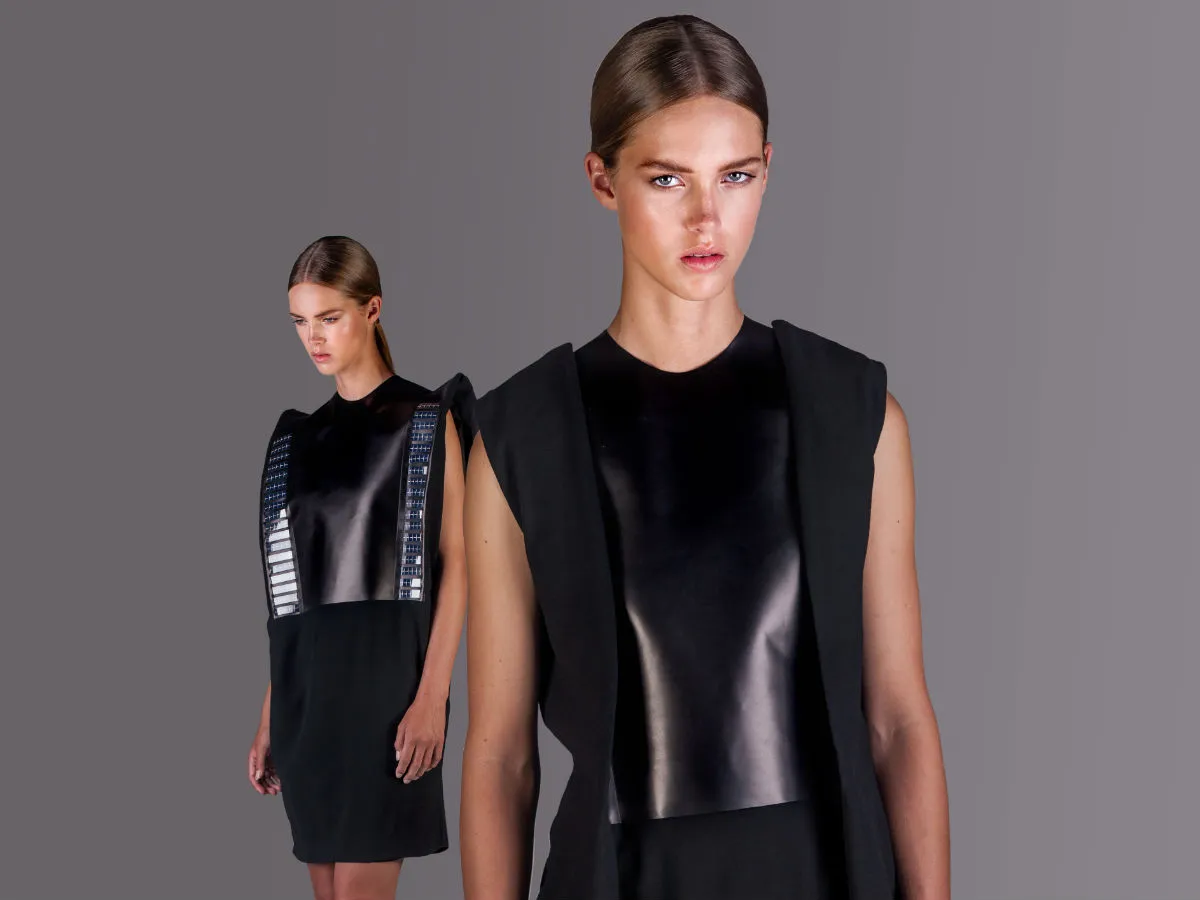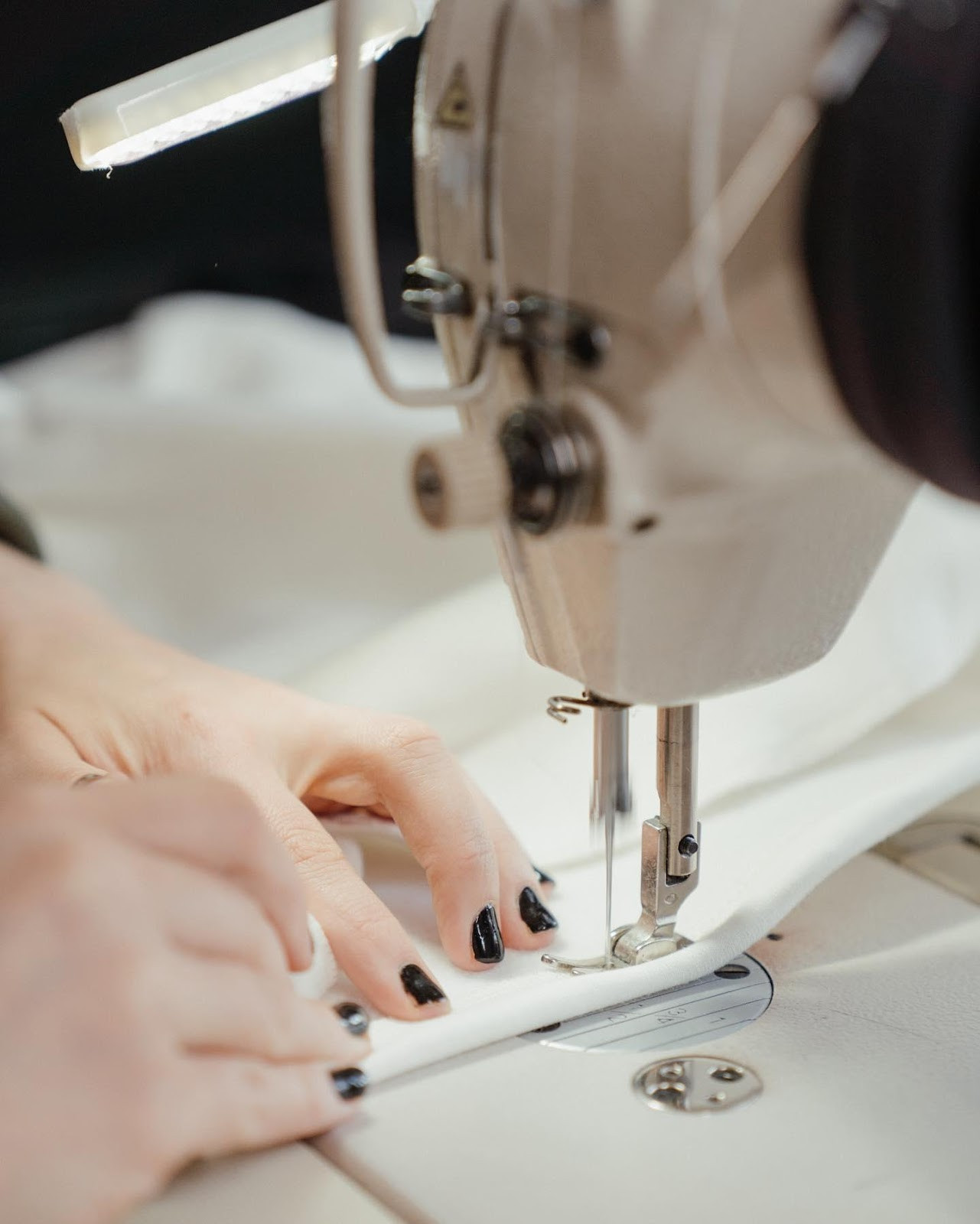Welcome to the fascinating intersection of fashion and renewable energy! Today, we're diving into how solar energy is transforming the fashion industry, making it more sustainable and eco-friendly. You might wonder, "Why solar energy?" Well, as the world grapples with climate change, industries are exploring ways to reduce their carbon footprints, and fashion is no exception.
Fashion's carbon footprint is substantial—estimated to contribute 10% of global carbon emissions and nearly 20% of wastewater. Solar energy presents a viable solution, allowing fashion brands to harness clean, renewable energy and reduce their environmental impact. SAEL (Sustainable & Affordable Energy for Life) , a renewable energy company, stated that by adopting solar power, companies not only lower their operational costs but also align with the increasing consumer demand for sustainable practices.
This blog will explore the journey of solar energy in fashion, highlighting success stories, benefits, and future trends. So, let's get started on this enlightening journey!
1. The Rise of Sustainable Fashion
The fashion industry has undergone a significant transformation over the past decade, shifting from fast fashion to more sustainable practices. This change is driven by a combination of consumer demand, environmental concerns, and regulatory pressures.

Historical Context: The Shift from Fast Fashion to Sustainable Fashion
Fast fashion, characterized by cheap, trendy clothing that quickly goes out of style, has long dominated the industry. However, its environmental impact—such as high water consumption, chemical pollution, and waste—has led to increasing scrutiny. Consumers are now more aware of these issues and are demanding change.
Key Drivers: Consumer Demand, Environmental Concerns, and Regulatory Pressures
Consumer Demand: Today's consumers, especially millennials and Gen Z, prioritize sustainability. They prefer brands that demonstrate ethical practices and environmental responsibility.
Environmental Concerns: The fashion industry is responsible for significant pollution and resource depletion. Awareness campaigns by organizations like Greenpeace have highlighted the need for sustainable practices.
Regulatory Pressures: Governments worldwide are implementing stricter environmental regulations. For instance, the European Union's Circular Economy Action Plan aims to make sustainable products the norm
Examples of Sustainable Practices in Fashion
Ethical Sourcing: Brands are sourcing materials from suppliers who adhere to fair labor practices. For example, Patagonia ensures its cotton is organic and Fair Trade Certified.
Eco-Friendly Materials: Innovations like recycled polyester, organic cotton, and biodegradable fabrics are gaining popularity. Adidas, for instance, has introduced shoes made from ocean plastic.
Waste Reduction: Companies are adopting zero-waste designs and recycling programs. H&M's garment collecting initiative encourages customers to recycle old clothes, reducing landfill waste.
By embracing these practices, the fashion industry is moving towards a more sustainable future. Solar energy is a key part of this transition, offering a clean, renewable power source that further reduces the industry's environmental impact.
2. Understanding Solar Energy in Fashion
Solar energy is a clean and renewable power source that has gained significant traction across various industries, including fashion. But what exactly is solar energy, and how is it applied in the fashion sector?
Explanation of Solar Energy and Its Benefits
Solar energy is harnessed from the sun using photovoltaic (PV) cells, which convert sunlight into electricity. This process produces no greenhouse gas emissions, making it an environmentally friendly alternative to fossil fuels. The benefits of solar energy include reduced energy costs, decreased carbon footprint, and energy independence.
How Solar Panels Work and Their Applications in Various Industries
Solar panels consist of many PV cells that absorb sunlight and generate direct current (DC) electricity. This DC electricity is then converted to alternating current (AC) through an inverter, which powers homes, businesses, and factories (source: National Renewable Energy Laboratory). Industries like fashion utilize solar panels on factory rooftops, enabling them to produce clean energy on-site and reduce reliance on traditional power grids.
3. Benefits of Solar Energy for the Fashion Industry
Switching to solar energy offers numerous benefits for the fashion industry, encompassing environmental, economic, and brand image improvements.
Environmental Impact: Reducing Carbon Footprints and Greenhouse Gas Emissions

The fashion industry is a significant contributor to global carbon emissions. By adopting solar energy, fashion companies can drastically reduce their carbon footprints. For example, solar energy produces no greenhouse gases during operation, directly lowering the emissions from fashion production processes (source: International Energy Agency).
Economic Advantages: Cost Savings on Energy Bills and Potential Government Incentives
Investing in solar energy can lead to substantial cost savings. While the initial setup costs for solar panels can be high, the long-term savings on energy bills often outweigh these expenses. Many governments also offer incentives, such as tax credits and grants, to support the adoption of renewable energy. For instance, the U.S. Federal Investment Tax Credit (ITC) offers a significant deduction for solar energy investments (source: Solar Energy Industries Association).
Enhancing Brand Image: Aligning with Consumer Values and Improving Corporate Social Responsibility (CSR)
Consumers today are increasingly conscious of the environmental impact of their purchases. Brands that embrace solar energy can enhance their image by demonstrating a commitment to sustainability and corporate social responsibility. This alignment with consumer values can strengthen brand loyalty and attract a broader customer base. Patagonia, for example, has built a strong reputation as an eco-friendly brand partly due to its use of renewable energy sources (source: Patagonia).
These benefits highlight why more fashion brands are investing in solar energy, not only to reduce their environmental impact but also to achieve economic savings and strengthen their market position.
4. Case Studies: Leading Brands Using Solar Energy
Let's take a closer look at some fashion brands that have successfully integrated solar energy into their operations, showcasing their commitment to sustainability and innovation.
Nike
Nike has been a pioneer in adopting renewable energy. At their European Logistics Campus in Belgium, they have installed a vast array of solar panels that generate a significant portion of the facility's energy needs. This installation not only reduces their carbon footprint but also showcases their dedication to sustainable practices).
H&M
H&M has taken substantial steps towards sustainability by incorporating solar energy in various locations. Several of their stores and warehouses are equipped with solar panels, contributing to their ambitious goal of becoming climate positive by 2040. This initiative helps reduce their reliance on non-renewable energy sources and cuts down on operational costs (source: H&M Sustainability Report).
Patagonia
Patagonia, known for its environmental advocacy, has implemented solar energy across its headquarters and retail stores. Their commitment to using renewable energy reflects their broader mission of environmental stewardship and sustainable business practices. By harnessing solar power, Patagonia not only reduces its energy costs but also sets an example for other companies in the industry (source: Patagonia).
These case studies illustrate how leading fashion brands are leveraging solar energy to achieve their sustainability goals. By investing in renewable energy, they are not only reducing their environmental impact but also reaping economic benefits and enhancing their brand image. As solar technology continues to advance, we can expect even more fashion companies to follow in their footsteps, further integrating renewable energy into their operations.
5. Challenges and Solutions
Despite the numerous benefits, adopting solar energy in the fashion industry is not without its challenges. Let's delve into the common obstacles and explore the innovative solutions that are paving the way for broader adoption.
Common Challenges Faced by Fashion Brands in Adopting Solar Energy
High Initial Costs: The upfront investment for installing solar panels can be substantial. For many companies, especially smaller brands, this initial cost can be a significant barrier (source: International Renewable Energy Agency).
Technical Barriers: Integrating solar energy systems into existing infrastructure can be technically complex. It requires specialized knowledge and sometimes significant modifications to current operations (source: U.S. Department of Energy).
Space Requirements: Solar panels require ample space for installation, which can be a constraint, particularly in urban settings where space is limited (source: National Renewable Energy Laboratory).
Innovative Solutions and Emerging Technologies
Financial Incentives and Support: Governments and organizations are offering financial incentives, grants, and loans to ease the initial cost burden. For example, the Solar Investment Tax Credit (ITC) in the U.S. provides a significant reduction in tax liability for solar energy investments (source: Solar Energy Industries Association).
Technological Advancements: Advances in solar technology are making installations more efficient and cost-effective. Innovations such as thin-film solar cells and building-integrated photovoltaics (BIPV) are reducing space requirements and making it easier to integrate solar power into existing structures (source: Energy.gov).
Third-Party Partnerships: Collaborating with third-party solar providers through power purchase agreements (PPAs) allows fashion brands to adopt solar energy with minimal upfront costs. These providers handle the installation and maintenance, and the brand agrees to purchase the generated power at a fixed rate (source: National Renewable Energy Laboratory).
By addressing these challenges with innovative solutions, the fashion industry can continue its transition towards a more sustainable future. As technology evolves and financial barriers decrease, the adoption of solar energy will become increasingly feasible, further enhancing the industry's environmental credentials.
6. Future Trends and Predictions
The future of solar energy in the fashion industry looks promising, with several emerging trends and technological advancements set to drive further adoption.
The Future of Solar Energy in the Fashion Industry
As solar technology advances and becomes more affordable, we can expect an increase in its adoption within the fashion sector. Innovations are making solar installations more efficient and less intrusive, allowing brands to integrate renewable energy seamlessly into their operations.
Emerging Trends: Portable Solar Technologies and Integrated Solar Fabrics

Portable Solar Technologies: Innovations like portable solar chargers and flexible solar panels are making it easier for fashion brands to incorporate solar energy into various aspects of their business, from production facilities to retail stores (source: Energy.gov).
Integrated Solar Fabrics: Research is underway to develop fabrics that can generate solar power. These solar textiles could potentially revolutionize the fashion industry by allowing garments themselves to generate energy (source: MIT Technology Review).
Predictions for the Next Decade: Increased Adoption, Technological Advancements, and Regulatory Changes
Increased Adoption: With falling costs and rising awareness, more fashion brands will invest in solar energy. This will be driven by both economic benefits and consumer demand for sustainability (source: International Renewable Energy Agency).
Technological Advancements: Continued innovation in solar technology will enhance efficiency and reduce costs, making it even more accessible for the fashion industry.
Regulatory Changes: Governments worldwide are likely to implement stricter regulations on carbon emissions, further incentivizing the adoption of renewable energy sources like solar power (source: European Commission).
These trends and predictions highlight a bright future for solar energy in the fashion industry. As technology evolves and awareness grows, solar power will play a crucial role in driving the industry towards a more sustainable and eco-friendly future.
7. Practical Steps for Fashion Brands
Switching to solar energy can seem daunting, but with the right approach, fashion brands can successfully integrate this renewable energy source into their operations. Here are some practical steps to guide the transition.
Step-by-Step Guide for Fashion Brands to Transition to Solar Energy
Conduct an Energy Audit: Assess current energy usage to identify potential savings and determine the required solar capacity (source: Energy.gov).
Set Clear Goals: Define what you aim to achieve with solar energy, such as cost savings, carbon reduction, or energy independence (source: U.S. Environmental Protection Agency).
Explore Financial Options: Look into government incentives, tax credits, and grants available for solar energy projects. Consider financing options like loans, leases, or power purchase agreements (PPAs) (source: Solar Energy Industries Association).
Resources and Tools: Government Programs, Financial Incentives, and Technical Support
Government Programs: Utilize programs like the Federal Investment Tax Credit (ITC) and state-specific incentives to offset installation costs (source: DSIRE USA).
Technical Support: Work with solar energy consultants or providers to design and implement the system. Companies like SunPower and SolarCity offer comprehensive services (source: EnergySage).
Tips for a Successful Implementation
Partner with Renewable Energy Providers: Collaborate with reputable solar energy companies to ensure quality installation and maintenance.
Set Realistic Goals: Start with a pilot project if necessary, and gradually scale up based on the results and savings achieved.
Engage Stakeholders: Involve employees, customers, and investors in the transition process. Communicate the benefits and progress regularly to maintain support and enthusiasm.
By following these practical steps, fashion brands can effectively transition to solar energy, enhancing their sustainability efforts and benefiting from reduced operational costs. The journey towards renewable energy is a significant step towards a greener, more sustainable future for the fashion industry.
8. Conclusion
In conclusion, the integration of solar energy into the fashion industry is not just a trend but a necessary evolution towards sustainability. Solar energy offers numerous benefits, from reducing carbon footprints and lowering operational costs to enhancing brand reputation. As fashion brands continue to adopt renewable energy sources, they not only contribute to environmental conservation but also align with the growing consumer demand for eco-friendly practices.
Fashion's commitment to sustainability, through the use of solar power, represents a significant step forward in the fight against climate change. By harnessing the power of the sun, the industry can pave the way for a greener, more sustainable future.
9. Frequently Asked Questions (FAQs)
1. What are the initial costs of installing solar panels for a fashion brand?
The initial costs can vary widely depending on the size and location of the installation. On average, commercial solar panel installations can range from $50,000 to $500,000, but financial incentives and tax credits can significantly reduce these costs (source: Solar Energy Industries Association).
2. How long does it take to see a return on investment (ROI) from solar energy?
The ROI period for solar energy installations typically ranges from 5 to 10 years, depending on factors such as energy costs, available incentives, and the scale of the installation (source: Energy.gov).
3. Are there any specific government incentives for fashion brands adopting solar energy?
Yes, there are various incentives, including the Federal Investment Tax Credit (ITC), state-specific rebates, and grants aimed at encouraging the adoption of solar energy (source: DSIRE USA).
4. How can small fashion brands benefit from solar energy?
Small fashion brands can benefit from lower energy costs, reduced carbon footprints, and improved brand image by adopting solar energy. They can also take advantage of financial incentives and third-party financing options to mitigate upfront costs (source: EnergySage).
5. What other renewable energy sources can be integrated into fashion operations?
In addition to solar energy, fashion brands can explore wind power, geothermal energy, and biomass as alternative renewable energy sources to further enhance their sustainability efforts (source: U.S. Department of Energy).
By embracing solar energy and other renewable sources, fashion brands can lead the charge towards a more sustainable future, setting an example for other industries to follow.
Post Comment
Be the first to post comment!






